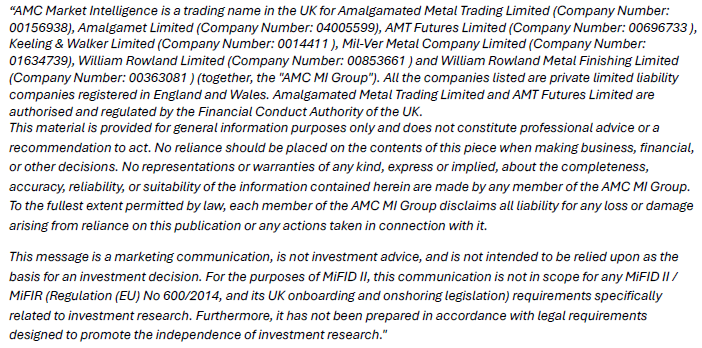Tin prices have rallied back above $35,000/mt, supported by renewed supply concerns. Indonesia: President Prabowo’s order to close 1,000 illegal mines in Bangka Belitung and cut smuggling routes has triggered the latest price rally, with futures quickly layering in a risk premium. The scale of the operation is unprecedented, but sustaining enforcement across vast offshore dredging grounds will be a major challenge. Historically, raids in Bangka have disrupted flows temporarily, only for activity to resume once patrols ease (see below: Enforcement sustainability). Traders had already been cautioning through the softer demand period of the summer that while visible LME stocks are critically low, off-warrant availability has been relatively comfortable. That backdrop makes the market cautious of headline-driven squeezes that could be blunted if shadow supply is mobilised into strength. Even so, with exchange stocks thin and enforcement framed as a national priority, the market remains highly sensitive to any indication that disruption could persist.
Elsewhere: Myanmar’s Wa State restart remains in motion but progress is slow, with licensing steps advancing but ore grades and operational readiness still unclear. In the DRC, Alphamin’s Bisie mine has resumed phased output after conflict-related disruption, yet production guidance has already been trimmed, highlighting continued exposure to logistics and security risks.
Inventories: LME stocks remain critically low at 2,670 mt, with the latest decline of 105 mt representing nearly 4% of total inventory. Cancelled warrants now account for 17% of available metal, signalling further potential withdrawals. With such thin exchange stocks, single-day shifts of this scale, when combined with supply-limiting headlines, inevitably add to price nervousness.
Technicals: Tin has previously tested sentiment above the 61.8% retracement ($34,777), finding limited appetite among speculators to drive a meaningful move higher. However, should this latest move manage to sustain several sessions with settlement above the technical support, the potential exists for upside toward $36,000– $37,000 if momentum holds. RSI is rising but not yet overbought, suggesting scope for further gains before exhaustion.
Enforcement sustainability: The September operation is Indonesia’s most sweeping anti-illegal mining campaign in years, with military, police, and customs deployed to shut down 1,000 mines and intercept smuggling routes. The immediate disruption is real, but history shows that sustaining such pressure is far harder. Offshore dredging dominates illegal activity in Bangka Belitung, often 70 to 85% of recorded cases, and these pontoons are highly mobile, able to relocate quickly when patrols tighten. Maintaining constant naval and aerial coverage across such a wide maritime zone is both costly and resource intensive.
Previous crackdowns, including the 2024 smelter seizures that temporarily removed around half of refining capacity, underline the point. Exports dropped sharply for a time, yet by early 2025 flows had normalised, demonstrating the resilience of informal networks. The integration pathway also remains intact: ore from illegal sites is typically aggregated by brokers and middlemen, blended into licensed material, and fed into smelters where documentation can be laundered. Once refined, the tin is indistinguishable from legal supply, making sustained eradication exceptionally difficult without reforms to intake monitoring and traceability.

